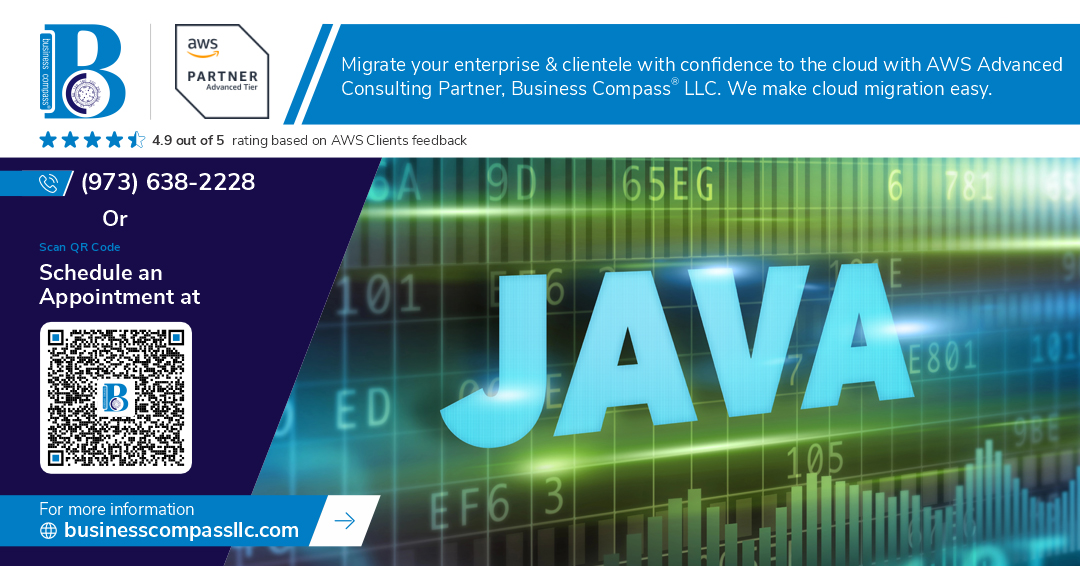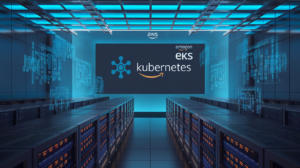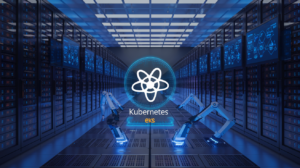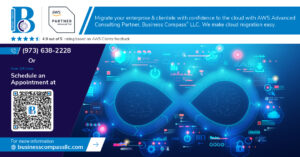Ever spent hours debugging a distributed system only to wish you’d gone with a simpler centralized approach? Or maybe you built a monolith that’s now buckling under scale. We’ve all been there.
The architecture you choose isn’t just a technical decision—it’s a business strategy that will either empower or handicap your development team for years.
This guide cuts through the noise around centralized vs distributed systems with practical Java examples you can actually use. No theoretical fluff, just battle-tested patterns.
By the end, you’ll understand exactly why Netflix abandoned their monolith while your bank’s core systems probably never will. And the reason might surprise you…
Understanding System Architectures in Modern Computing
Defining Centralized and Distributed Systems
Ever wonder why some apps feel lightning-fast while others crawl? The secret often lies in their architecture. Centralized systems operate like a strict hierarchy—one boss making all decisions. Distributed systems, meanwhile, function as collaborative teams with responsibilities spread across multiple nodes. This fundamental difference shapes everything from performance to reliability in modern software applications.
Evolution of System Architectures
Remember those massive mainframes from computing’s early days? That was peak centralization. One giant computer did everything while users competed for processing time. Fast-forward to today, and we’ve embraced distribution. Cloud computing, microservices, and containerization have revolutionized how we build systems. This shift wasn’t random—it addressed scaling limitations and single points of failure that plagued traditional architectures.
Key Characteristics that Differentiate System Types
| Characteristic | Centralized Systems | Distributed Systems |
|---|---|---|
| Control | Single authority | Multiple nodes |
| Scalability | Limited by hardware | Horizontally scalable |
| Fault Tolerance | Vulnerable to failure | Resilient with redundancy |
| Consistency | Naturally consistent | Eventually consistent |
| Complexity | Simpler to implement | More complex coordination |
The trade-offs are real. Centralized systems offer simplicity and strong consistency but struggle with scale. Distributed systems excel at handling massive workloads but introduce coordination headaches.
Business Implications of Architecture Choices
Architecture decisions aren’t just technical—they’re strategic business choices. Centralized systems typically require less initial investment but hit scaling ceilings that can throttle growth. Distributed architectures demand more upfront complexity but enable businesses to scale elastically with demand. The right choice depends on your specific needs: immediate market entry vs. long-term scaling potential.
Deep Dive into Centralized Systems
Core Components and Structure
Centralized systems revolve around a single control point handling all processing and data. Think of it as a spider in the middle of a web – all connections lead to one place. These systems typically include a powerful central server, client devices that request services, and communication protocols connecting them. Nothing happens without the central server’s say-so.
Exploring Distributed Systems Architecture
Exploring Distributed Systems Architecture
A. Foundational Principles and Components
Distributed systems are like puzzle pieces scattered across different locations but working together as one coherent system. They consist of autonomous computers linked through networks, sharing one crucial goal: appearing as a single unified system to users. These systems rely on middleware, communication protocols, and coordination mechanisms to handle everything from message passing to maintaining consistent states across nodes.
B. Types of Distributed Systems (Peer-to-Peer, Cluster, Grid)
Peer-to-Peer systems? Think BitTorrent or blockchain networks where every machine acts both as client and server. No central authority calling the shots.
Cluster systems pack machines close together in a single location, sharing resources and workloads. They’re the backbone of high-performance computing.
Grid systems stretch across geographic boundaries, connecting heterogeneous resources from different organizations. They’re perfect for massive scientific computations that no single organization could handle alone.
C. Benefits: Fault Tolerance, Scalability, and Resource Sharing
When your server crashes in a centralized system, everything stops. Not with distributed systems!
If one node fails, others pick up the slack. Need more power? Just add more machines to your network. No complete system redesign required.
These systems also let organizations pool their computing resources, making powerful processing available to everyone on the network. That scientific simulation that would take months on a single computer? Done in hours when distributed.
D. Challenges: Consistency, Synchronization, and Complexity
Building distributed systems is like herding cats. Ensuring all nodes have the same data view? Nightmare. Clock synchronization across nodes? Even worse.
Network failures, communication delays, and partial failures create scenarios that simply don’t exist in centralized systems. And debugging? Try finding a race condition across hundreds of machines.
The CAP theorem looms large: you can’t simultaneously guarantee consistency, availability, and partition tolerance. Trade-offs become the name of the game.
Java in Distributed Computing: Practical Implementation
Java in Distributed Computing: Practical Implementation
A. Essential Java Libraries and Frameworks for Distributed Systems
Java’s robust ecosystem makes it perfect for building distributed systems. Key players include Spring Cloud for microservices, Apache Kafka for messaging, gRPC for efficient RPC calls, and Akka for actor-based concurrency. These tools handle the heavy lifting so you can focus on business logic rather than infrastructure complexities.
B. Step-by-Step Example: Creating a Basic Distributed Application
// Server component
public class DistributedServer {
public static void main(String[] args) throws Exception {
Registry registry = LocateRegistry.createRegistry(1099);
CalculationService service = new CalculationServiceImpl();
registry.bind("CalculationService", UnicastRemoteObject.exportObject(service, 0));
System.out.println("Server ready");
}
}
// Client component
public class DistributedClient {
public static void main(String[] args) throws Exception {
Registry registry = LocateRegistry.getRegistry("localhost", 1099);
CalculationService service = (CalculationService) registry.lookup("CalculationService");
int result = service.add(5, 3);
System.out.println("Result: " + result);
}
}
// Shared interface
public interface CalculationService extends Remote {
int add(int a, int b) throws RemoteException;
}
// Implementation
public class CalculationServiceImpl implements CalculationService {
@Override
public int add(int a, int b) throws RemoteException {
return a + b;
}
}
This example demonstrates Java RMI (Remote Method Invocation) – one of Java’s built-in distributed computing mechanisms. The server exposes a calculation service that clients can call remotely, as if it were a local method.
C. Handling Communication Between Distributed Components
Communication is the backbone of distributed systems. Java offers multiple approaches:
| Method | Use Case | Pros | Cons |
|---|---|---|---|
| REST/HTTP | Service APIs | Simple, widely supported | Verbose, synchronous by default |
| gRPC | High-performance services | Efficient binary protocol, streaming | Steeper learning curve |
| JMS | Message queues | Reliable async communication | Additional infrastructure |
| WebSockets | Real-time updates | Full-duplex communication | Connection maintenance overhead |
The best choice depends on your specific requirements. Many systems combine multiple communication patterns for different scenarios.
D. Implementing Fault Tolerance Mechanisms
Distributed systems must expect and handle failures. Java provides several mechanisms:
// Retry pattern with exponential backoff
public Result performOperation() {
int attempts = 0;
int maxAttempts = 3;
long backoffMs = 1000;
while (attempts < maxAttempts) {
try {
return serviceClient.callRemoteOperation();
} catch (TemporaryException e) {
attempts++;
if (attempts >= maxAttempts) {
throw new ServiceUnavailableException("Max retry attempts reached", e);
}
try {
Thread.sleep(backoffMs * (long)Math.pow(2, attempts - 1));
} catch (InterruptedException ie) {
Thread.currentThread().interrupt();
throw new ServiceUnavailableException("Retry interrupted", ie);
}
}
}
throw new ServiceUnavailableException("Should not reach here");
}
Circuit breakers like Resilience4j and Hystrix prevent cascading failures by stopping calls to failing services. Timeouts prevent infinite waits, while bulkheads isolate failures to specific components. Modern frameworks often bundle these patterns into declarative annotations.
Performance Comparison: Centralized vs. Distributed Approaches
Performance Comparison: Centralized vs. Distributed Approaches
A. Benchmarking Methodology for Fair Comparison
Comparing apples to oranges won’t cut it when evaluating centralized versus distributed architectures. You need standardized metrics, identical hardware setups, and controlled variables. The best benchmarks isolate specific performance aspects while mirroring real-world scenarios. Synthetic tests help, but nothing beats running your actual workload across both architectures to see genuine differences emerge.
B. Throughput and Latency Considerations
Distributed systems often win the throughput game but fall behind on latency. Think about it – when data has to hop between multiple nodes, those milliseconds add up. Centralized systems typically respond faster for single requests but hit a ceiling when concurrent users pile up. Your optimal choice depends entirely on whether your users value lightning-fast responses or massive simultaneous processing power.
C. Scalability Under Various Load Conditions
Distributed systems shine when traffic spikes. They gracefully handle increasing load by adding nodes without major redesigns. Meanwhile, centralized systems hit performance cliffs – working perfectly until suddenly they don’t. The Java example below demonstrates how a distributed approach maintains response times even as concurrent users multiply, while the centralized version eventually buckles.
D. Resource Utilization Efficiency
Centralized systems make more efficient use of resources under light loads. No wasted overhead on coordination or redundancy. But distributed architectures excel at balancing resources across the network, preventing any single component from becoming a bottleneck. Smart resource allocation algorithms can significantly reduce the hardware investment needed for either approach to meet your performance targets.
Making the Right Architectural Decision
Making the Right Architectural Decision
A. Assessment Framework for System Requirements
Choosing between centralized and distributed architectures isn’t a coin toss—it’s a strategic decision that shapes your entire system. Start by mapping your requirements against these five key factors: performance needs, scalability expectations, fault tolerance requirements, geographic distribution of users, and your budget constraints. This framework helps cut through the complexity and points you toward the right architectural path.
B. When to Choose Centralized Architecture
Centralized systems shine when simplicity trumps all. If your application serves a limited user base, doesn’t need complex scaling, and operates in a single geographic region, go centralized. Think internal corporate tools, specialized applications with predictable workloads, or systems where tight control matters more than massive scale. The maintenance costs are lower, and troubleshooting doesn’t require a distributed systems PhD.
C. Scenarios Where Distributed Systems Excel
Distributed architectures become your best friend when scale and resilience are non-negotiable. Global user bases, unpredictable traffic spikes, and 24/7 availability requirements all scream for distribution. Modern e-commerce platforms, social networks, and cloud services wouldn’t exist without distributed approaches. Yes, they’re more complex, but they deliver horizontal scalability and fault tolerance that centralized systems simply can’t match.
D. Hybrid Approaches: Getting the Best of Both Worlds
Why choose when you can combine? Hybrid architectures cherry-pick the best elements from both worlds. You might centralize your core business logic while distributing your data storage, or use a centralized coordinator with distributed workers. Many successful systems use regional centralized nodes connected in a distributed network—giving you local performance with global resilience. Netflix and Amazon have mastered this balancing act.
E. Future Trends in System Architecture Design
The future belongs to adaptive architectures that blur traditional boundaries. Serverless computing, edge computing, and self-healing systems are reshaping how we think about the centralized-distributed spectrum. We’re moving toward systems that can dynamically shift between centralized and distributed modes based on real-time conditions. The question is evolving from “which architecture?” to “which architecture when?”
Choosing between centralized and distributed systems requires careful consideration of your project’s specific requirements. As we’ve explored, centralized systems offer simplicity and consistency but may struggle with scalability, while distributed systems excel in fault tolerance and handling large workloads despite their increased complexity. Java provides powerful tools for both architectures, from simple client-server applications to sophisticated distributed frameworks like Spring Cloud and Akka.
The right architectural decision ultimately depends on your application’s needs. For smaller applications with consistent workloads, a centralized approach may be sufficient. However, as demands grow, distributed architectures become increasingly valuable. Remember that hybrid approaches are also possible, allowing you to leverage the strengths of both paradigms. Whichever path you choose, a solid understanding of these fundamental concepts will help you build resilient, scalable systems that can evolve with your business requirements.



















